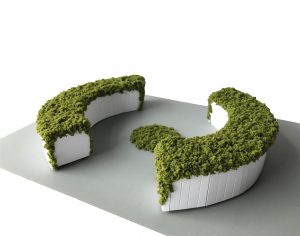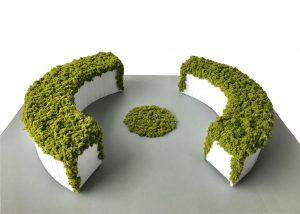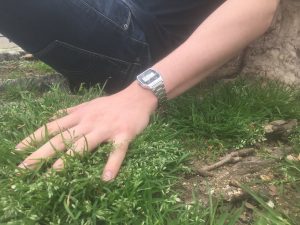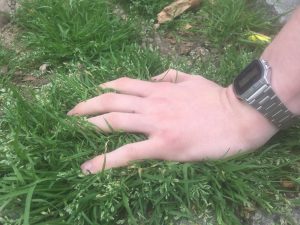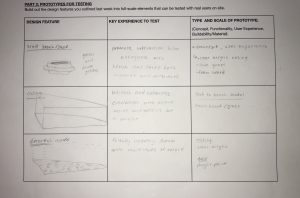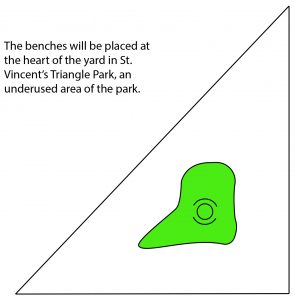Prototypes for Testing continued:
I challenged myself by trying to use as little material as possible to make sure nothing goes to waste. I chose to use foam board for its versatility and sturdiness, modeling green, and glue. I simplified my initial concept of the bench and split the bench in half, as realistically one cannot enter the inside of the bench without a gap. I then envisioned a bench with no back support, as it seemed to cut off engagement between the users. I steered away from making a structure encasing the benching, as it would then isolate the site intervention from the rest of the park.
I began by using a compass to cut our the top pieces. I then cut out strips and cut slits in them to make them moldable to the semi-circular shape and attached the piece with glue. I finished the piece by covering the tops with grass and made the grass fall off the top to meet the grass on the ground.
In the model, there is a small circular patch of grass. Ideally these benches would be placed in the yard and have grass completely under and around them like pictured below:
Proof of user testing:
I researched how humans process the color green and found that the color helps relax our retinas and calm our nerves as our ancestors were surrounded by green spaces for thousands of years. As St. Vincent’s Triangle Park was opened as an initiative to conserve green space, I found it necessary to make an intervention that is natural to humans and continues the park’s initial objective. I tested the experience of sitting in nature, specifically on grass, to solidify the need for a naturally cushioned seat. This phenomenon positively affected the user, as the grass stimulated both the visual and physical senses of the user. With this is mind, covering this circular bench in grass or other plant like material will have a positive impact on the user regardless of their interaction with others. The design of the bench, however, encourages the users to interact as they can face inwards toward each other. The experience feels like a picnic or a day with no shoes on the grass.
